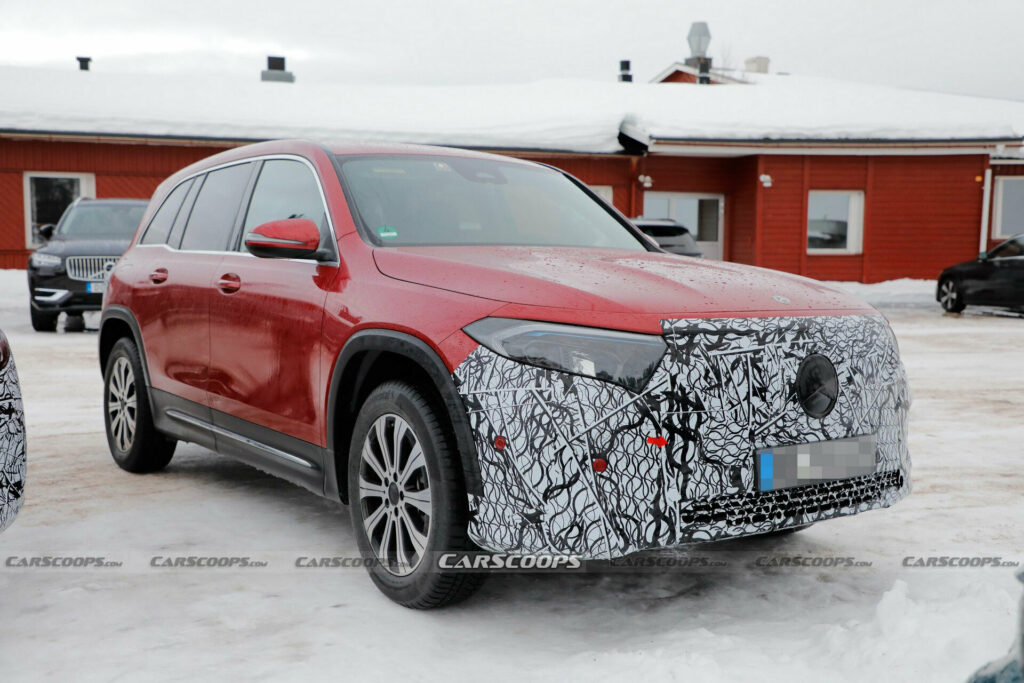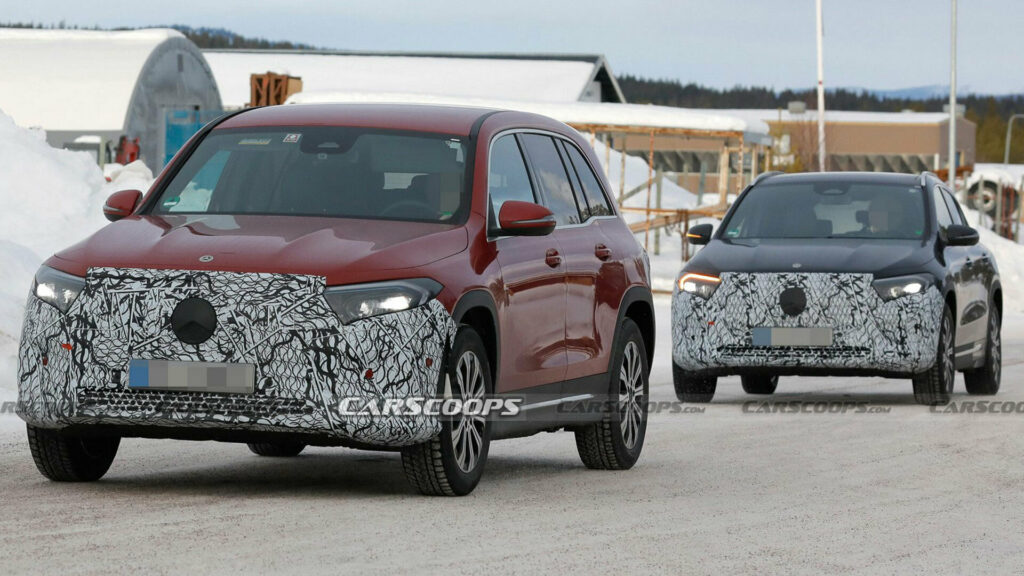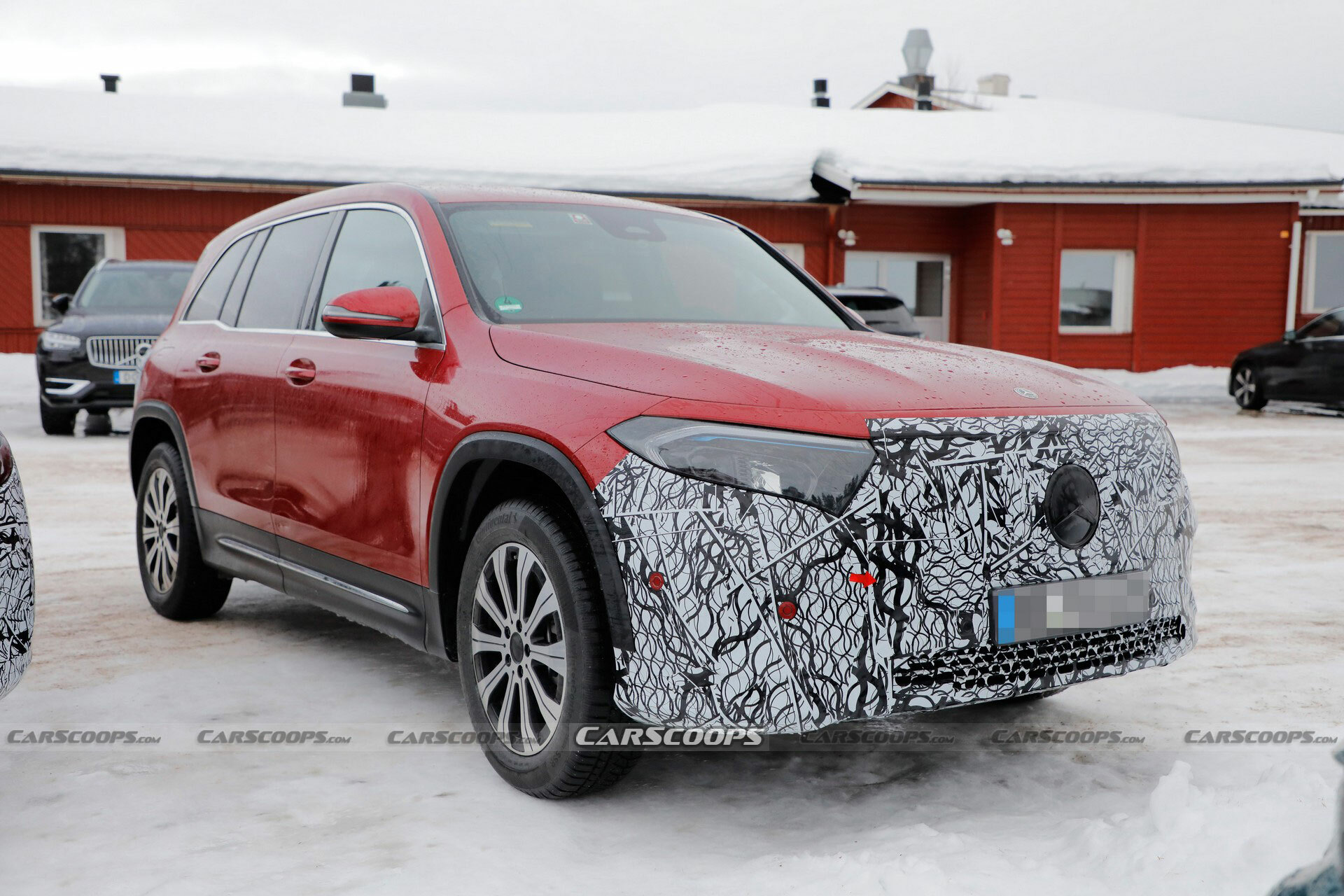It’s a spy photo double feature as the facelifted Mercedes EQA has been caught with the updated EQB.
Spotted wearing identical camouflage, the electric crossovers will receive a minor refreshening that primarily focuses on the front end. While there isn’t much to see, we can expect a new front bumper and a revised grille. The latter will be fully enclosed and flanked by familiar headlights.
The subtle styling changes continue out back as we can get a glimpse at updated taillights that feature horizontal graphics. We can also see what appears to be a lightly revised tailgate.
Also: The Mercedes EQA Is Electric, But Its Facelift Won’t Be Electrifying

Spy photographers didn’t take interior pictures, but said the infotainment screen was covered. This suggests the cabin will largely carryover, but there could be some new tech features – although don’t expect TikTok and a selfie camera.
It remains unclear if there will be any performance changes, but Mercedes currently offers the EQB 300 and 350 in the United States. The former has a 70.7 kWh battery pack that powers a dual-motor all-wheel drive system developing a combined output of 225 hp (168 kW / 228 PS) and 288 lb-ft (390 Nm) of torque. This setup enables the model to travel 243 miles (391 km) on a single charge.
The EQB 350 is similar, but sports an upgraded dual-motor all-wheel drive system with 288 hp (215 kW / 292 PS) and 384 lb-ft (520 Nm) of torque. This cuts the 0-60 mph (0-96 km/h) time to six seconds flat, but the range falls to 227 miles (365 km).
While the EQA isn’t offered stateside, Europeans can get 250, 250+, 300, and 350 variants. The latter two powertrains echo the aforementioned EQB, while the entry-level EQA 250 has a 66.5 kWh battery pack and a front-mounted electric motor that develops 187 hp (140 kW / 190 PS) and 284 lb-ft (385 Nm) of torque. This gives the crossover a 0-62 mph (0-100 km/h) time of 8.6 seconds and a WLTP range of up to 307 miles (495 km).




























